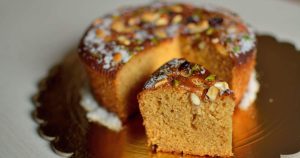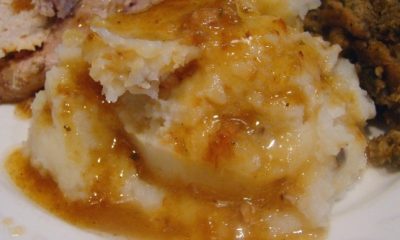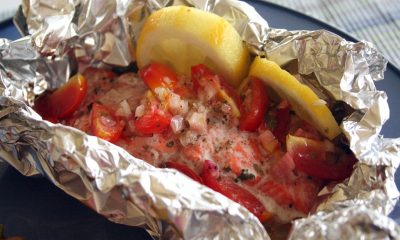Ask
Perfect Your Baking Skills With These Tips
How do you know when a cake is done?
Try the following tips and tricks to make sure you never serve unbaked cake again.
1. The edges of the cake pull away
Usually a cake has finished cooking when the edges of the cake pull away from the side of the tin. You should be able to see a gap between the cake and the tin.
2. ‘Springy to the touch’
If your cake is bouncy/springy when you gently press down on it with your finger, it is likely that your cake is ready to be taken out of the oven. A wobbly or firm middle that doesn’t bounce back is a sign that the cake needs more baking time.

3. Skewer is Clean
When you insert a thin skewer in the cake, it should come out clean (or with a few dry crumbs). If you pull it out and wet cake mixture has stuck to the skewer, it means the cake has not finished baking completely.
4. Thermometer
Perhaps the most accurate way to check if your cake is done is to use a thermometer to check the internal temperature of the cake which should be around 98 C (210 F).
5. Cut the cake!
If in doubt/too eager/excited to see what the cake looks like on the inside, you can always cut a very thin wedge from the cake to have a peep – but don’t eat it just yet! Fit the wedge back into the cake and cover the cake completely with icing/frosting. No one will ever know!Alternatively, level the cooled cake with a bread knife, taking a thin layer from the top off (you can eat this part!) Check for texture, taste, and ensure the cake is cooked through.
What type of oven is the best for cake baking?
Here are the pros and cons of baking a cake in various ovens. You can decide on which suits for you.
Using a Gas Oven for Baking
Pros:
– Unlike electric ovens, the heat on a gas oven is instant, so it heats very quickly.
– If your home is already equipped with a gas line, a gas oven will be more cost-effective than an electric oven.
Cons:
– The oven doesn’t heat as evenly, as the temperature can fluctuate widely.
– The inside of a gas oven tends to be more humid than other oven types, leading to issues with browning and crisping of food.
Baking Tips:
– Because of their notorious hot spots, it’s imperative that you rotate your cooking trays during cooking.
– To make your oven heat more evenly, place a pizza stone on the floor or lowest rack of your oven. Don’t cook directly on the stone, though (it’s just there to even out the heat).
– Since it’s more humid in a gas oven, consider cooking items that you want more browned on the top rack or turning up the oven temperature by 25 degrees to get more crunch and crisp on the food.
– Avoid cooking in dark metal bakeware, as this can cause your foods to burn at the bottom.
Using an Electric Oven for Baking
Pros:
– Because the electric coils heat and cool slowly, the radiant heat that is produced is fairly steady and even, with fewer spikes and drops in the temperature.
– The inside of an electric oven remains dry, which helps food crisp up and turn golden brown.
– When the coils are completely on, it’s a less intense heat, so you don’t have to worry as much about the undersides of your food burning.
– Electric ovens cost considerably less than gas ovens.
Cons:
– Unlike gas heat, the electric coils take a little while to heat up to the full temperature.
– Your food can easily over-brown in an electric oven.
Baking Tips:
– Since the coils needs to take some time to warm up, consider preheating longer than you may think is necessary, to ensure an optimal temperature.
– To avoid over-browning the food, loosely “tent” some aluminum foil over the top of the dish if you notice the edges or tips starting to brown long before the rest of the dish is done.
– An electric oven’s “sweet spot” is in the middle. For the most consistently cooked food, place the trays on the middle rack.
Using a Convection Oven for Baking
Pros:
– Because of its third heating element and fan, the hot air directly around the food is steadily maintained.
– Your food cooks quicker than with other ovens.
– Your food is cooked more evenly than with other ovens.
Cons:
– Because “convection” is typically a setting on the oven, when it’s turned off, the same issues arise as with using a conventional oven for baking — whether it’s gas or electric (convection ovens can be either).
– Ovens with a convection setting are generally more expensive than conventional ovens.
Baking Tips:
– Because it cooks the food so efficiently, lower the temperature that a recipe calls for by 25 degrees.
– Likewise, because your food tends to cook quicker, keep an eye on it, especially toward the end of the cooking time.
– To ensure the air circulates well, cook with low-sided pans.
– If you’re cooking something “fragile,” such as a soufflé, don’t use the convection setting, as the air may blow the mixture around and distort the end result.





















